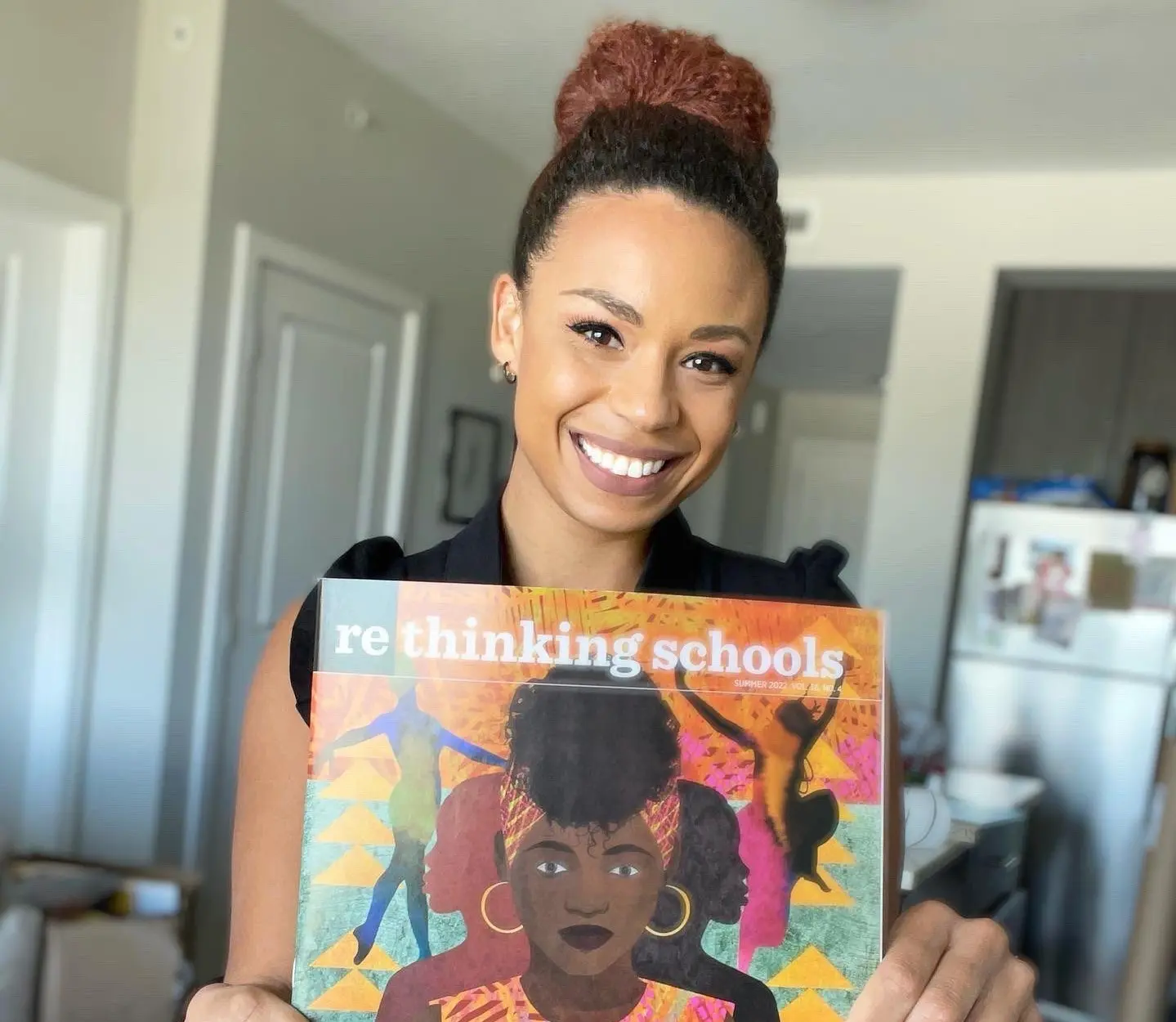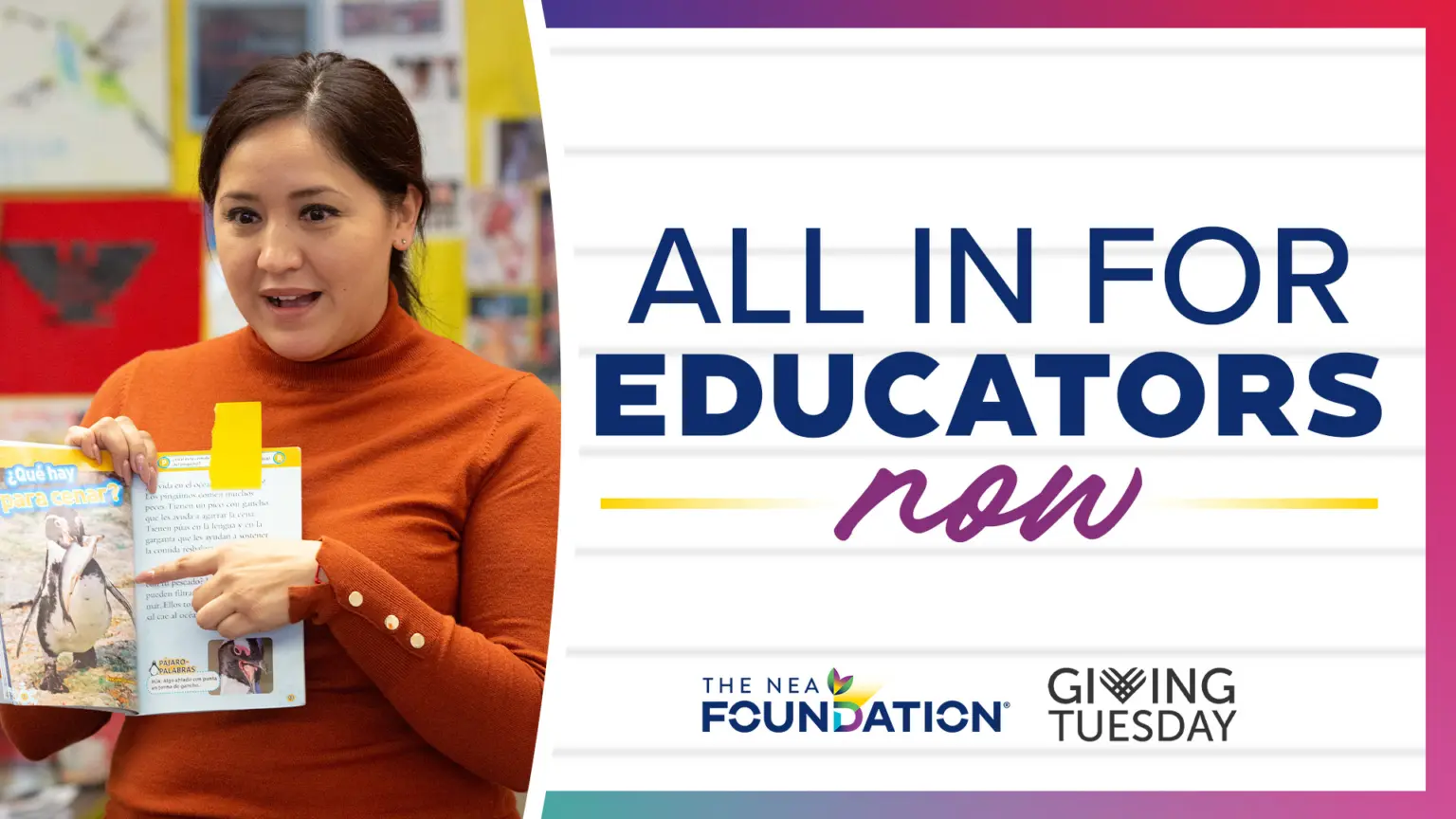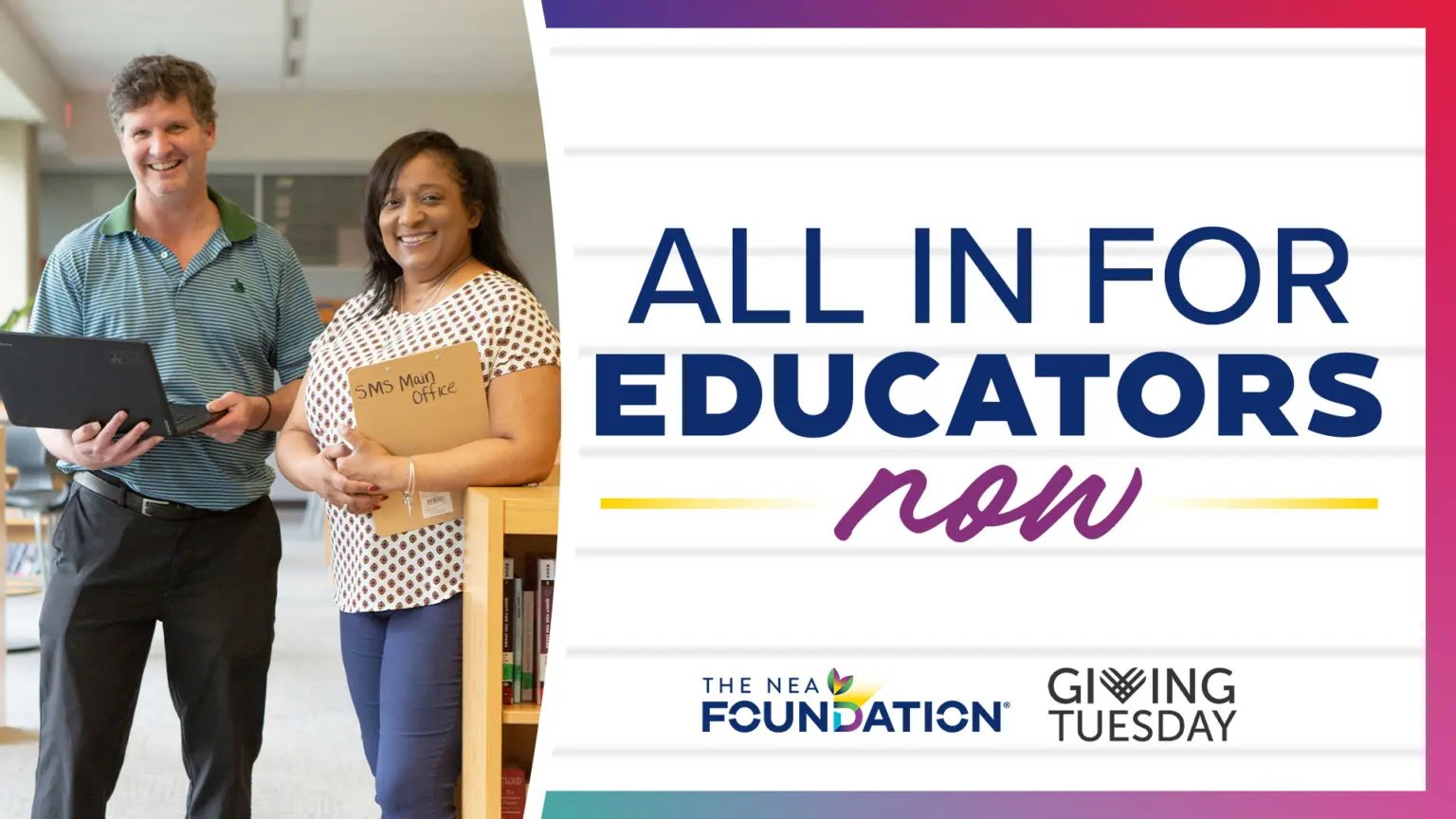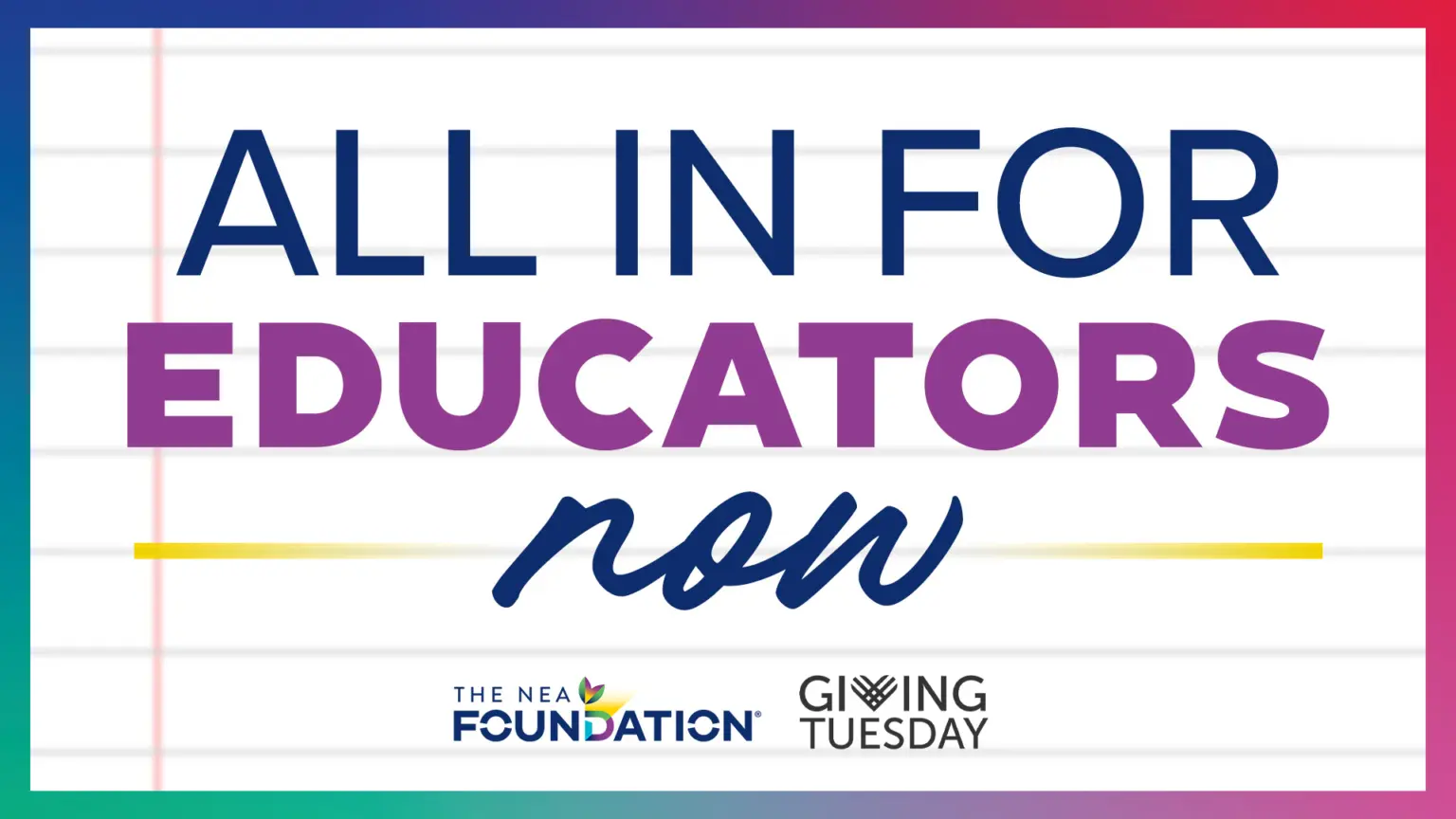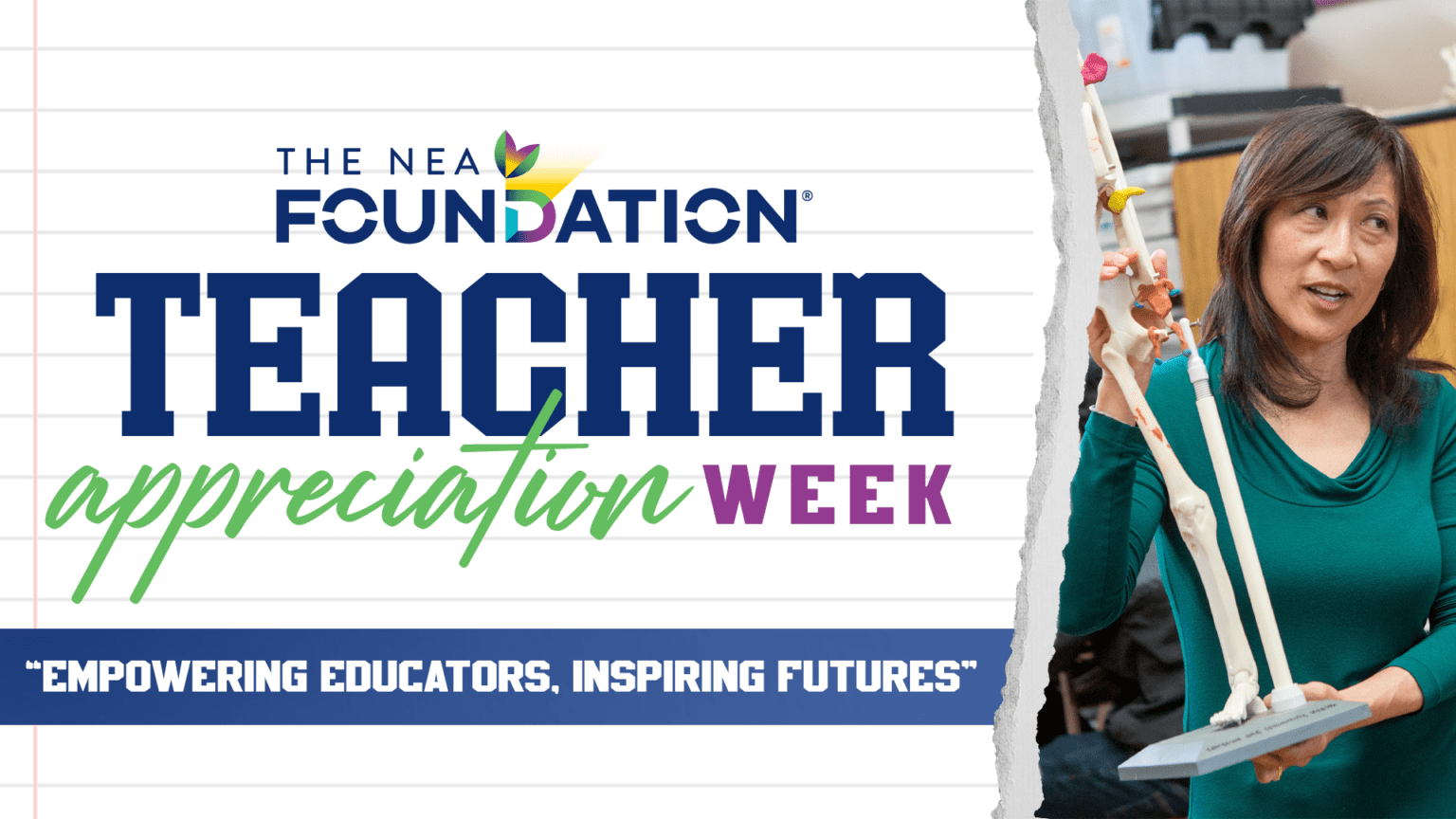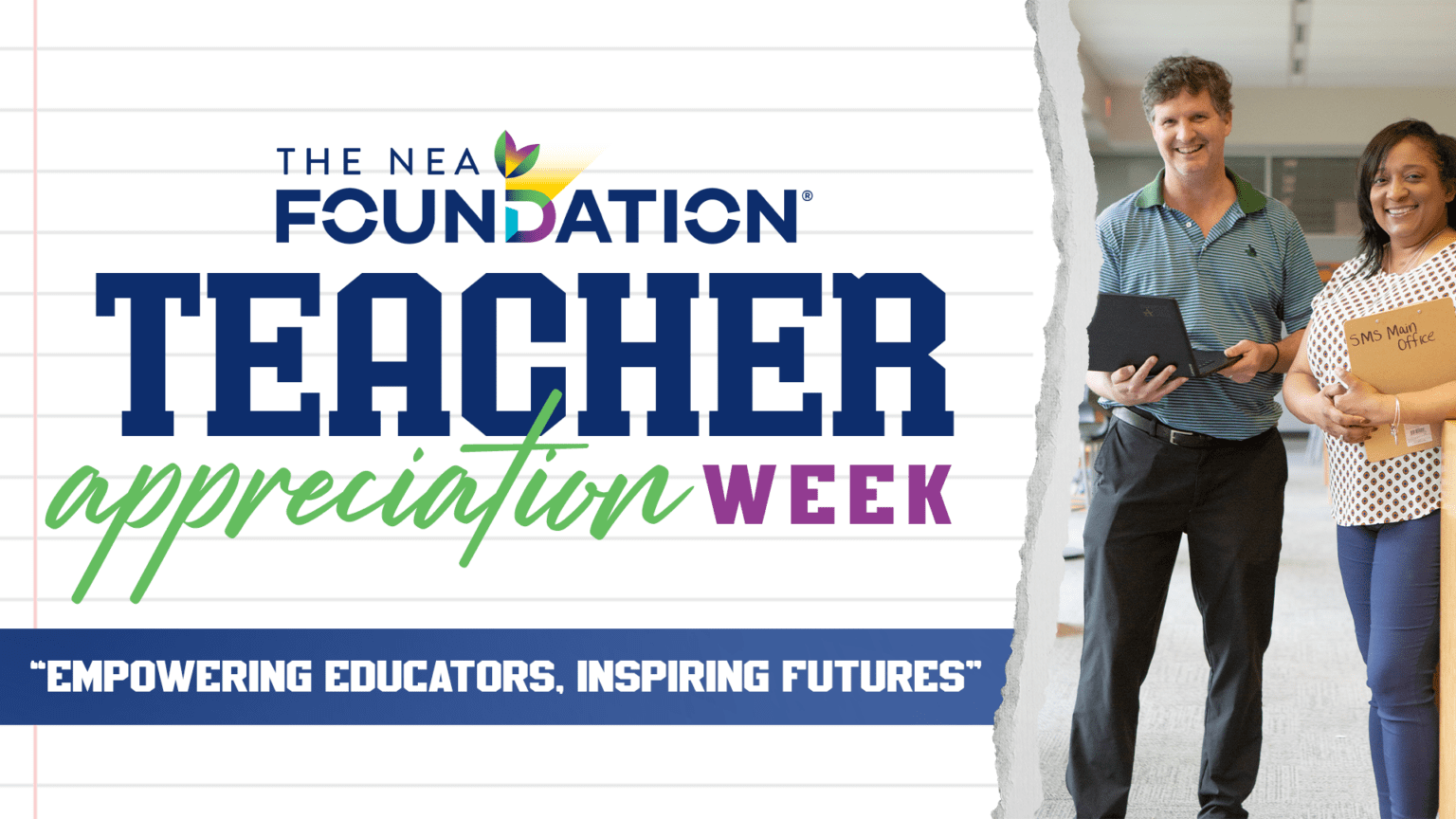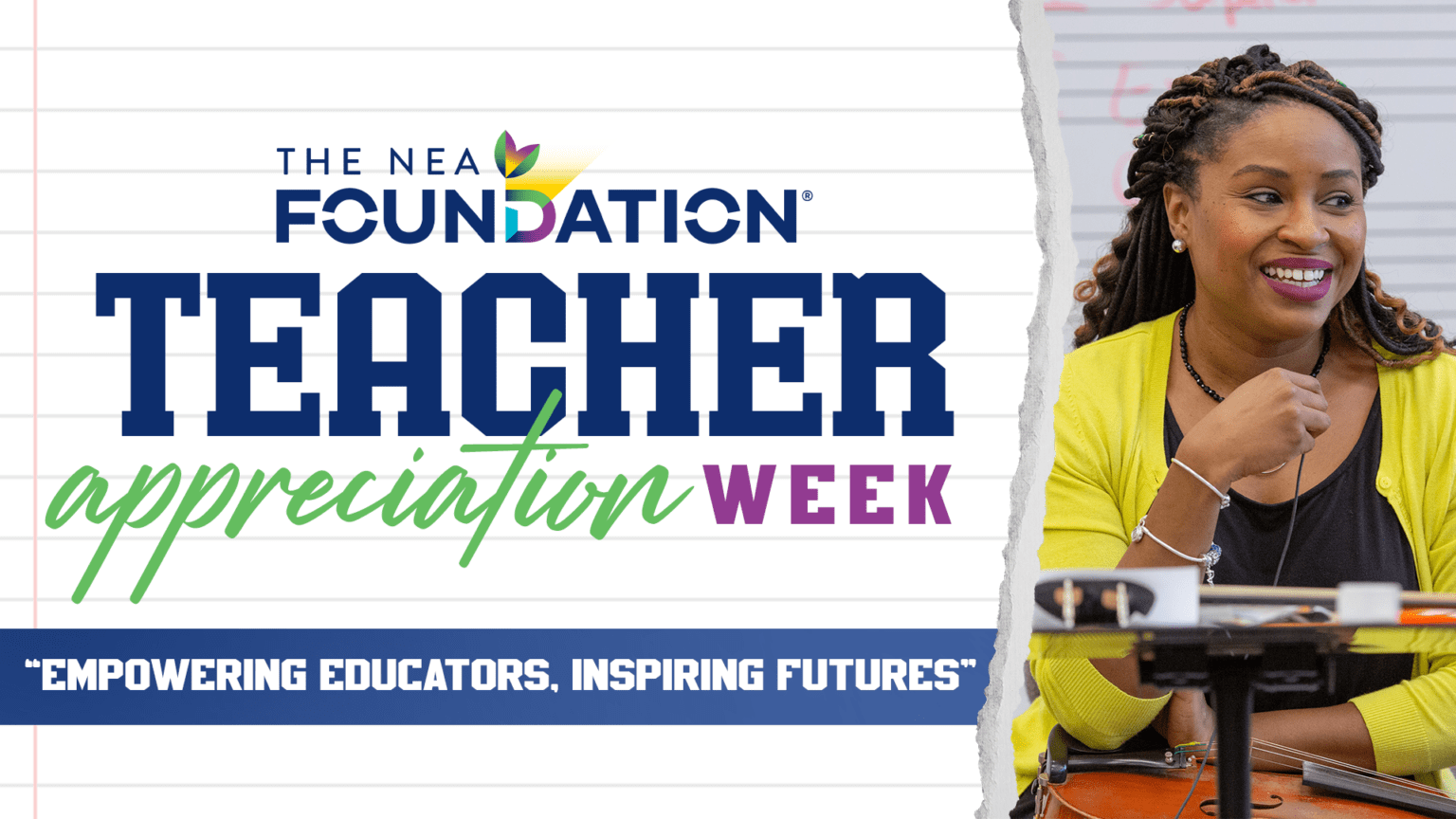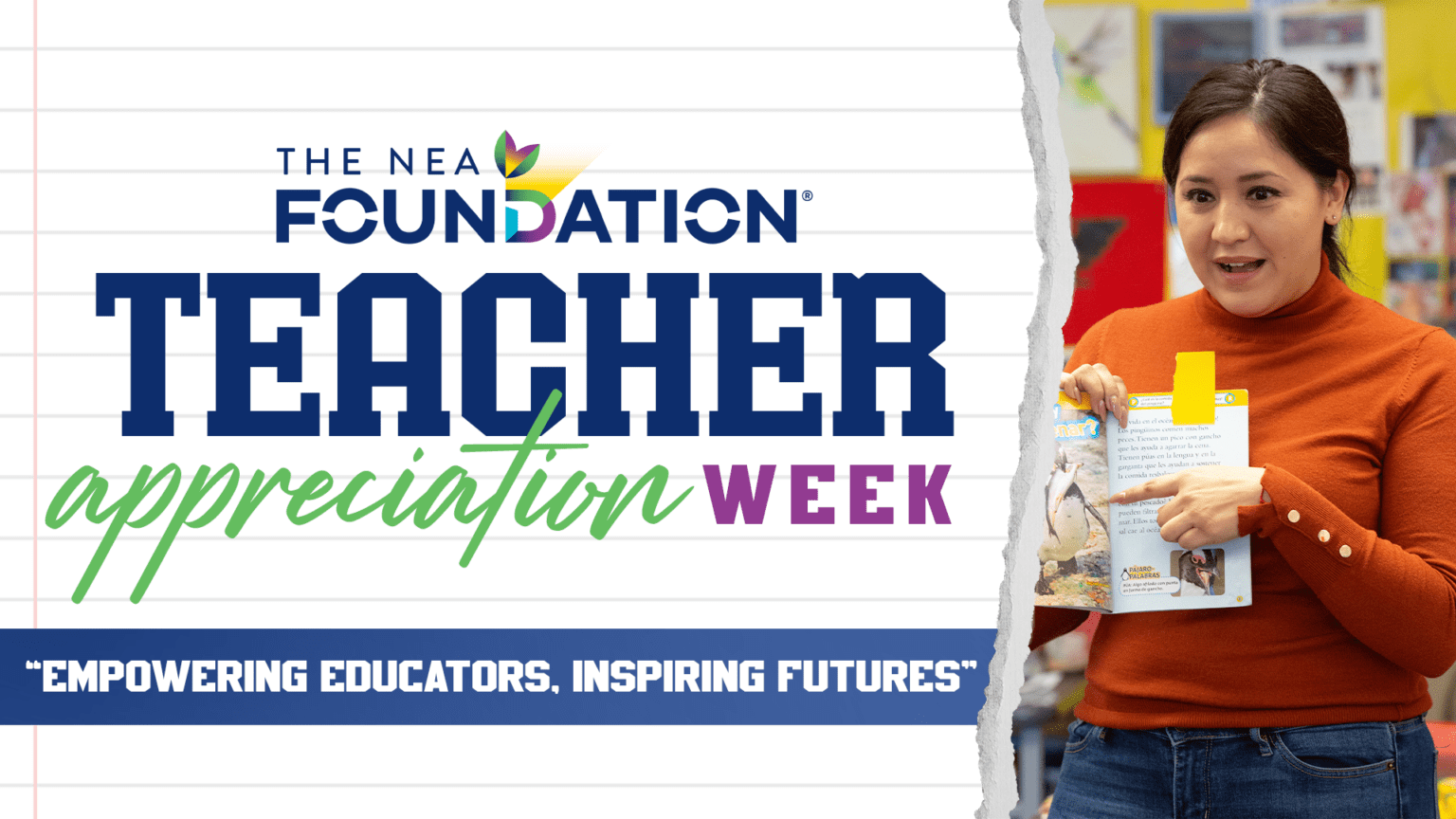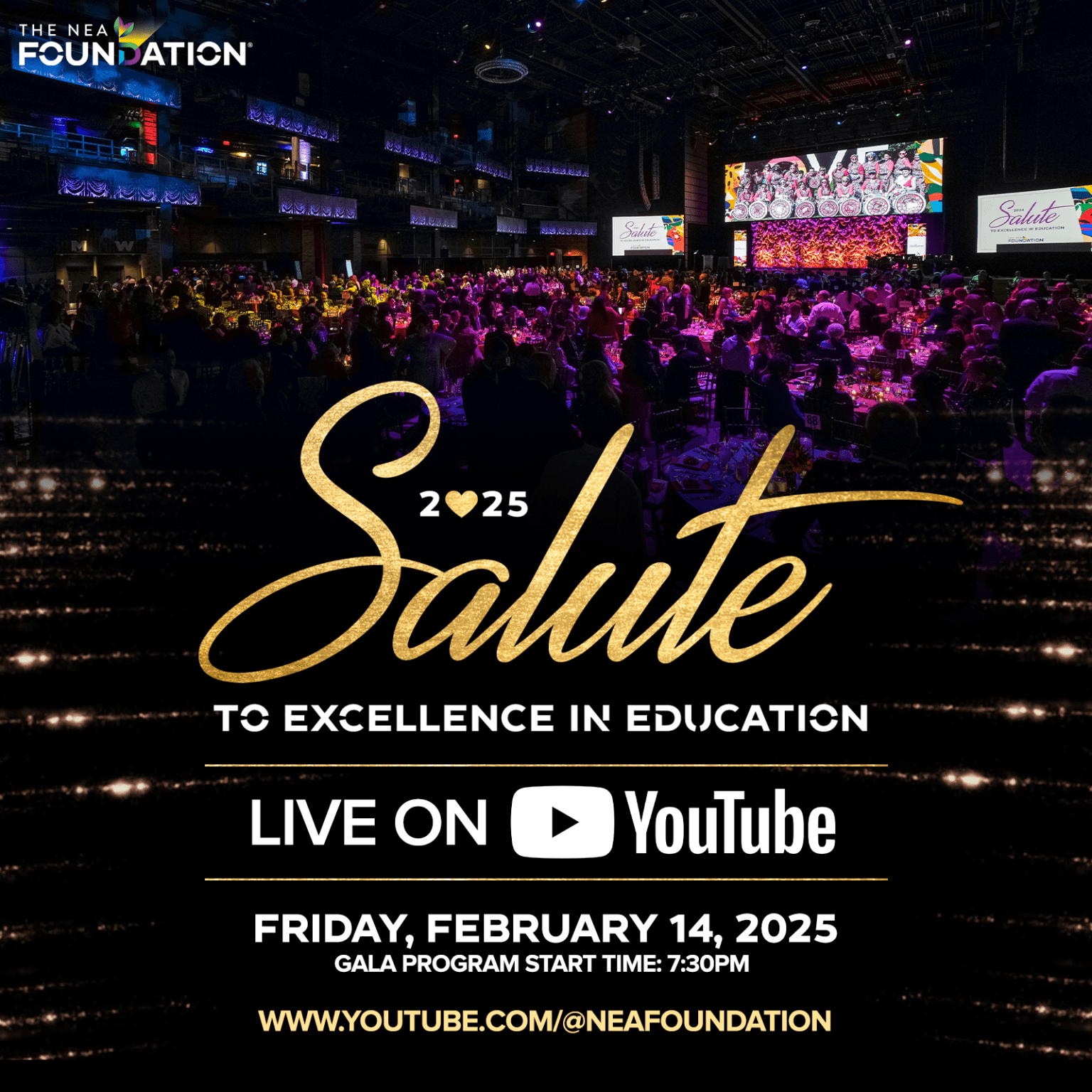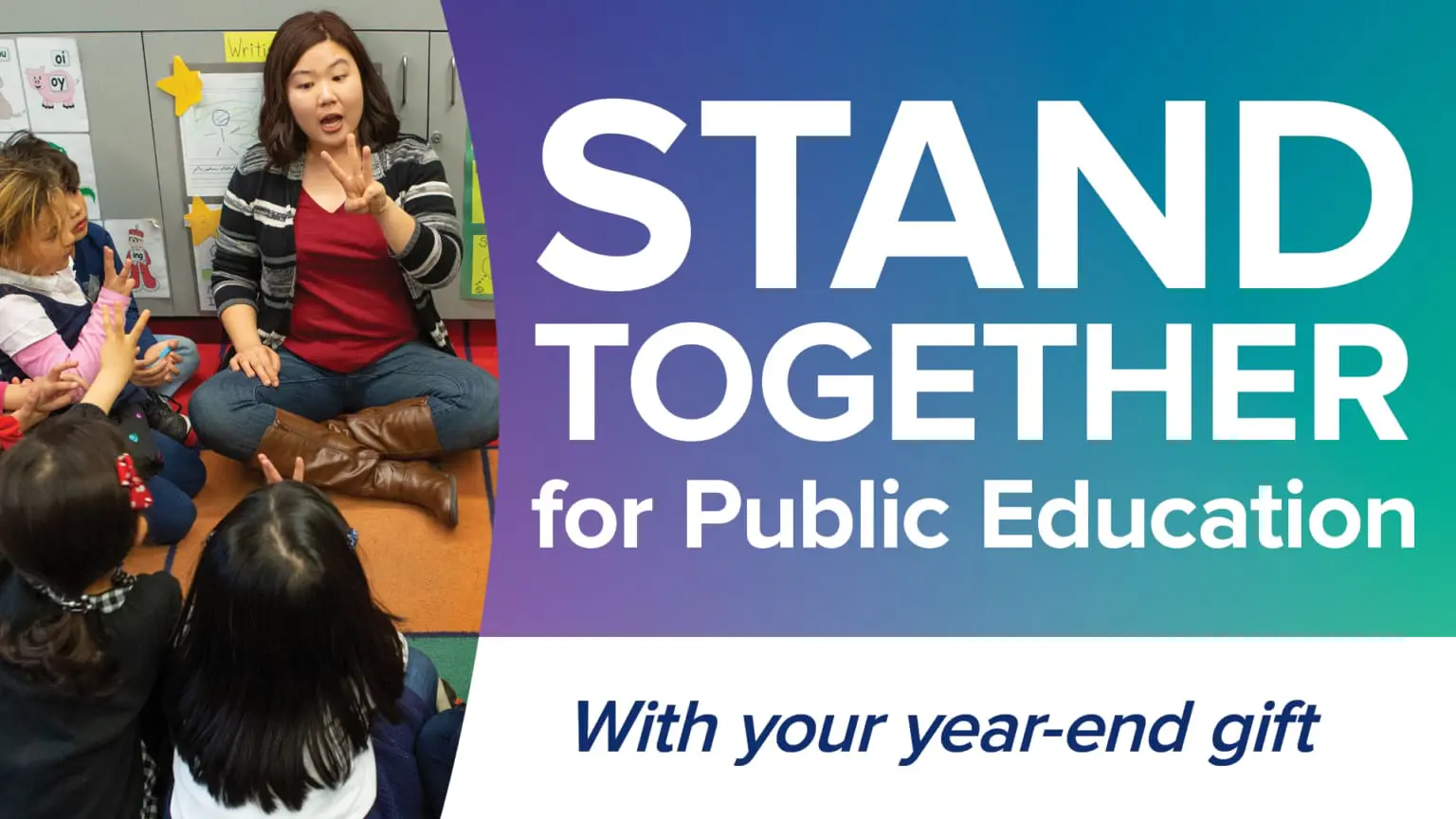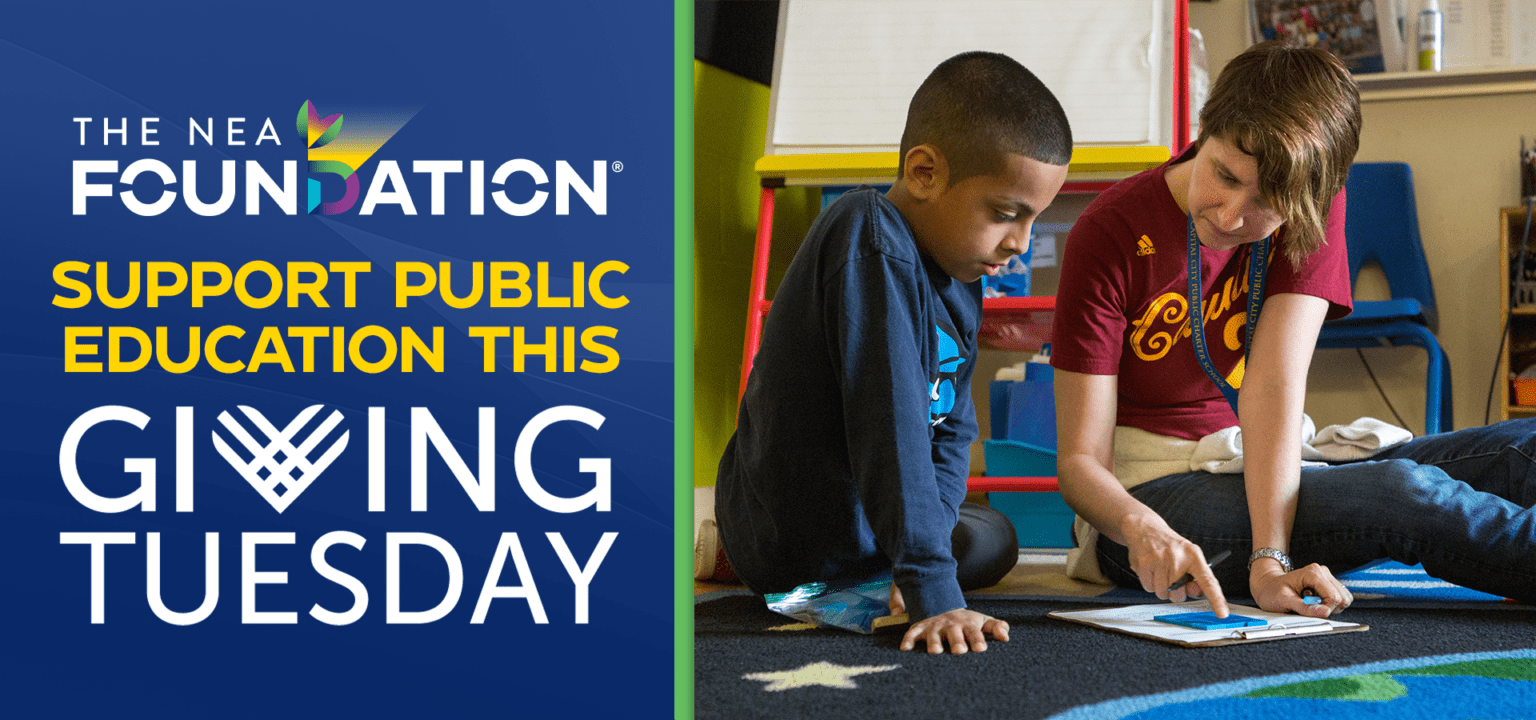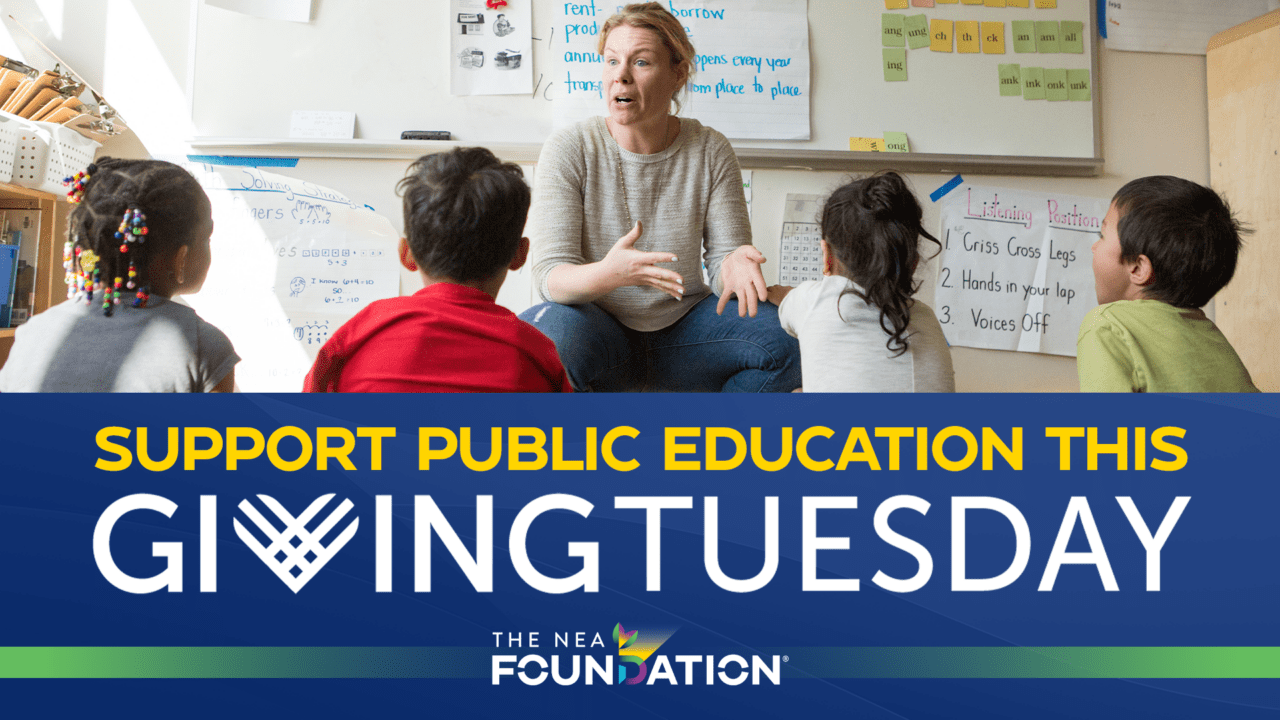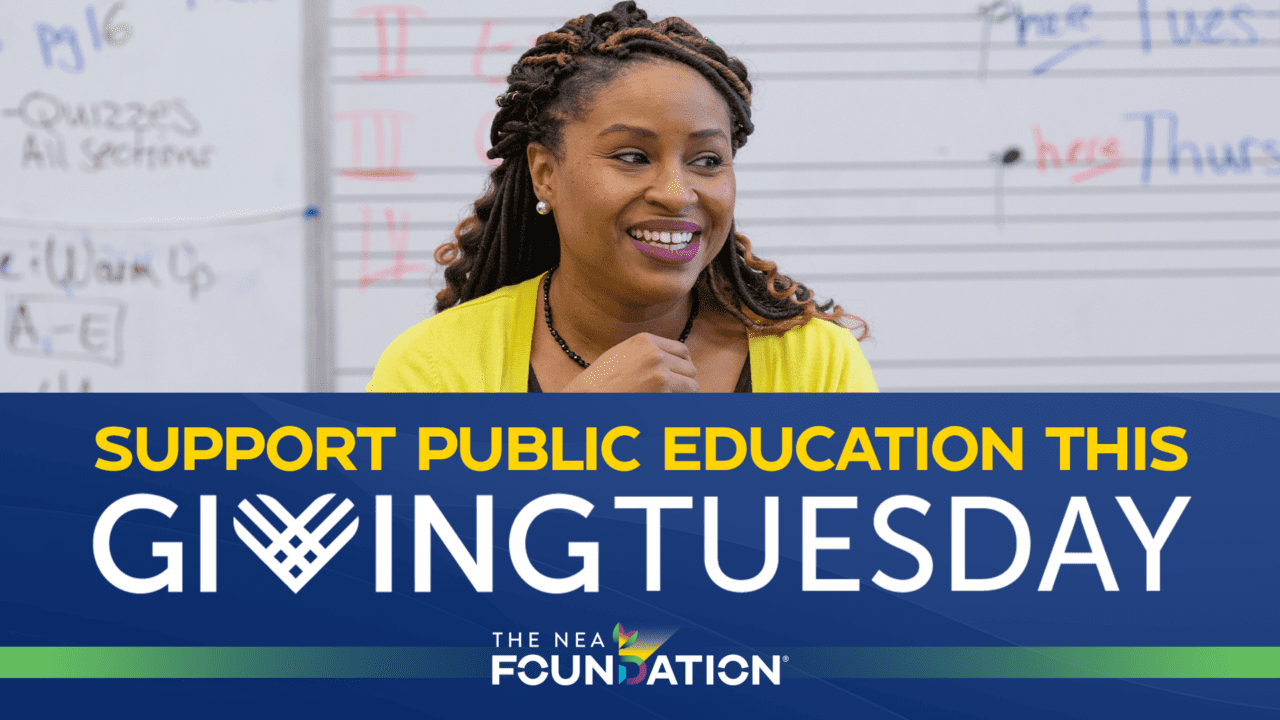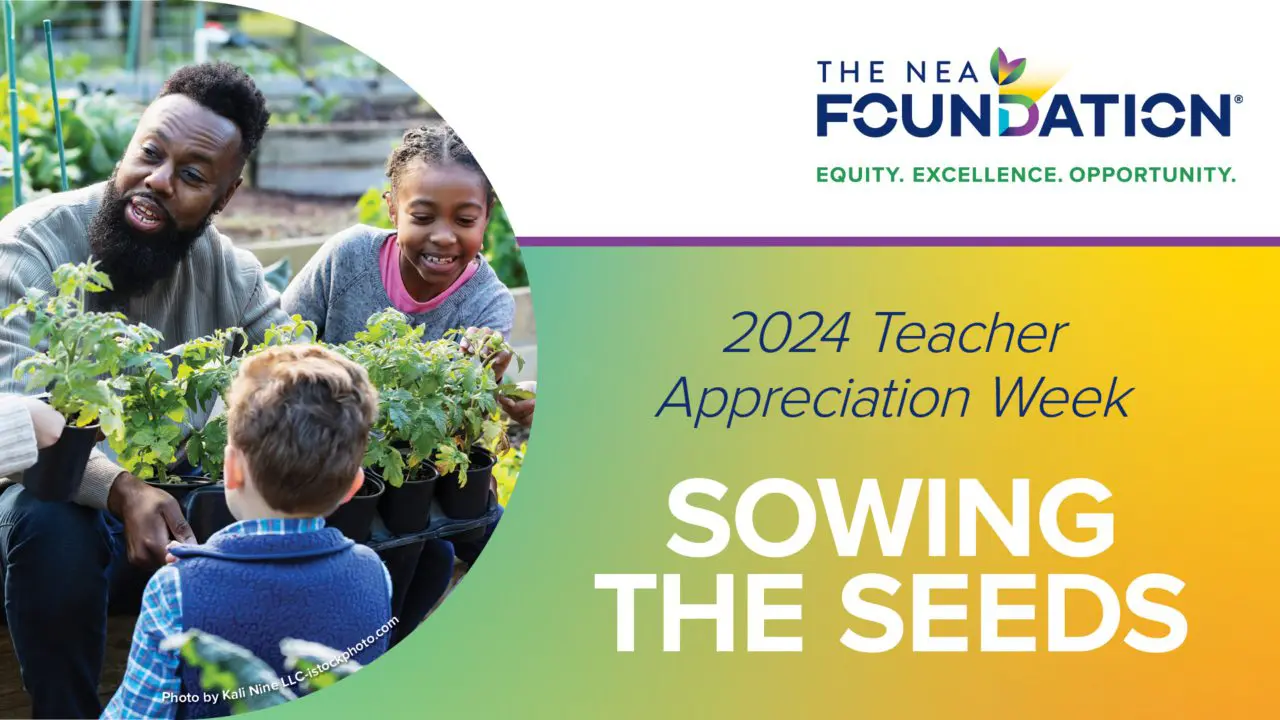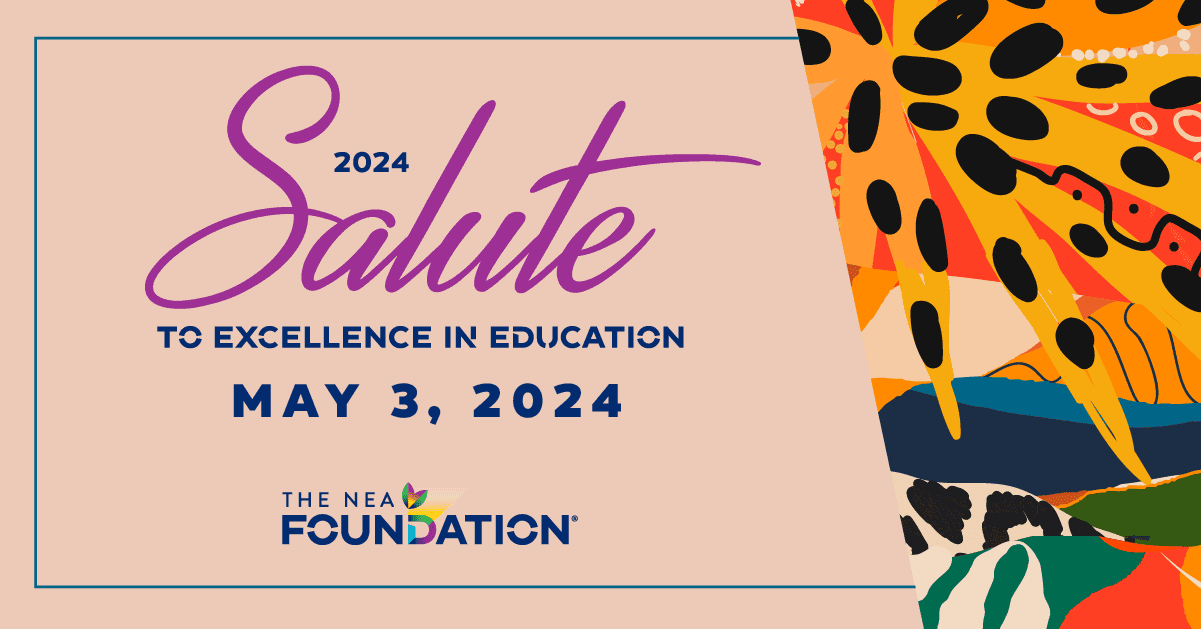Cierra Kaler-Jones is the Executive Director of Rethinking Schools, a nonprofit publisher and advocacy organization dedicated to sustaining and strengthening public education through social justice teaching and education activism. For the second year in a row, Rethinking Schools will lead a storytelling and advocacy workshop series for The NEA Foundation’s 2025 Awards for Teaching Excellence recipients. In this guest blog post, Cierra shares how she has used her own storytelling skills to advocate for change.
What was a moment that changed your life? I’ll tell you mine.
The first time I shared my story publicly, I was a junior in high school. Significant statewide budget cuts to education devastated my school district and the school board announced their decision to cut the arts programs. As a dancer since the age of five, this was the first time I felt overwhelmingly passionate about something – so passionate that I knew I had to speak up. I began to organize my peers, teachers, and community members as we started a social media campaign, wrote op-eds to the local paper, and showed up at school board meetings to make our stance known.
I’ll never forget my first school board meeting. I sat with shaky legs and clammy palms as I flipped through the white, lined notecards that held my talking points. The dull hum of feet shuffling, chairs creaking, and Board members swiftly moving through their agenda served as background noise to the loud pulse of my eardrums. A single sweat droplet trickled down from my eyebrow.
After what felt like hours of Board proceedings, the Board finally called for public comment. I slowly rose and squeaked out, “I have something to say. My name is Cierra Kaler-Jones and I am an 11th grade student.” I paused and exhaled before continuing, “I’m here to speak in support of the arts programs.”
I detailed my personal story and the impact that arts education had on my life. I explained how entering the dance classroom was the one space during the day where I felt like I could be myself — how it enabled me to discover and cultivate my sense of self-expression. I named that the program provided me the rigorous training and opportunities I needed to pursue a career in the arts.
While I offered statistics about the state of arts education, and its importance in creativity, collaboration, and critical thinking, I wanted to speak from a personal perspective. The timekeeper held up their “30 seconds left” card and I scanned the Board members’ faces for any hints of impact. I left them with a call-to-action in the strongest voice I could muster, “Vote yes to reinstate the arts programs at the next Board meeting.”
A robust crowd full of anxious and eager teachers, students, and parents filled the next Board meeting to witness the Board’s vote on reinstating the arts programs. The Board moved quickly to votes. As they went down the line to cast their vote for reinstating the arts program, each “yay” allowed the tightly-wound knot in my stomach to dissipate. The last Board member found my eyes in the sea of people and her comment resounded, “The stories you each shared at the Board meetings will always lead me to vote yes to arts education.” The crowd erupted in joyous cheers. We did it! Our campaign had been successful.
That experience taught me the importance of stories to inspire and incite others to action. Storytelling is what led me to my work at Rethinking Schools. We use storytelling to build narrative power, so that educators and education justice advocates have a space to tell their stories, share their strategies, and write as a tool for transformation.
Here are some tips for sharing your story as a tool for advocacy:
- Be clear on your why. Why is the story important to you? Why should it be important to others? Why must you tell this story at this time?
- Make your story descriptive. Take your audience to a particular moment in time — a scene. Illustrate the who, what, where, when, why, and how, but also take us through the senses that are accessible to you: What did you feel? What did you taste? What did you smell? What did you see? What did you hear? This draws on the emotional connection needed to build a relationship and credibility with your audience. Make the story believable.
- Know your audience. Who are they? What do they value? What shared experiences, values, or interests do you have with them? Is the story you’re telling something they can relate to? Use examples that are relevant to their experiences, challenges, and values.
- People will remember the first and last thing you say. Grab your audience’s attention with a hook. The hook could be something like a jarring statement, rhetorical question, or quote that makes your audience want to know what you’re going to share next. End with a call-to-action. What do you want your audience to do as a result of learning about your story?
Through storytelling, we can change policy, shape practice, and build deeper connections between school and community.
How will you leverage storytelling to create change?
THE NEA FOUNDATION IS COMMITTED TO FEATURING DIVERSE VOICES AND PERSPECTIVES ABOUT CRITICAL ISSUES FACING PUBLIC EDUCATION, STUDENTS, AND EDUCATORS. THESE VIEWS DO NOT NECESSARILY REFLECT THOSE OF THE NEA FOUNDATION.

